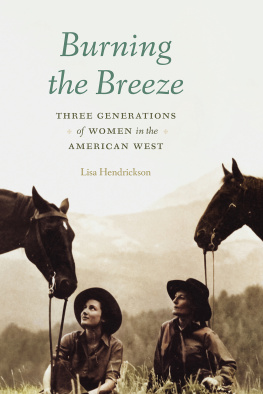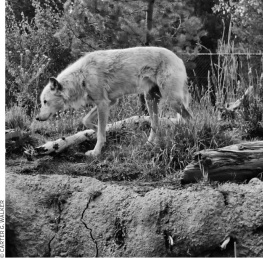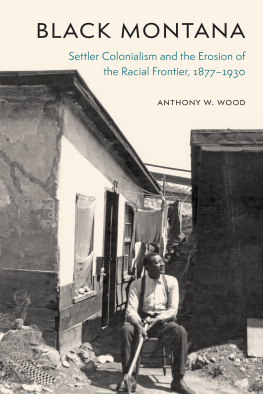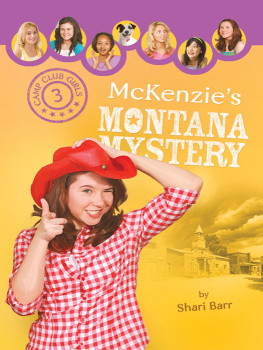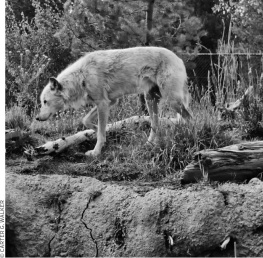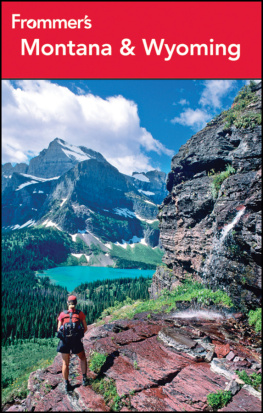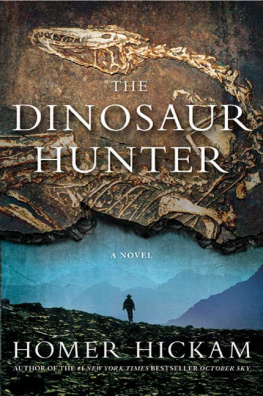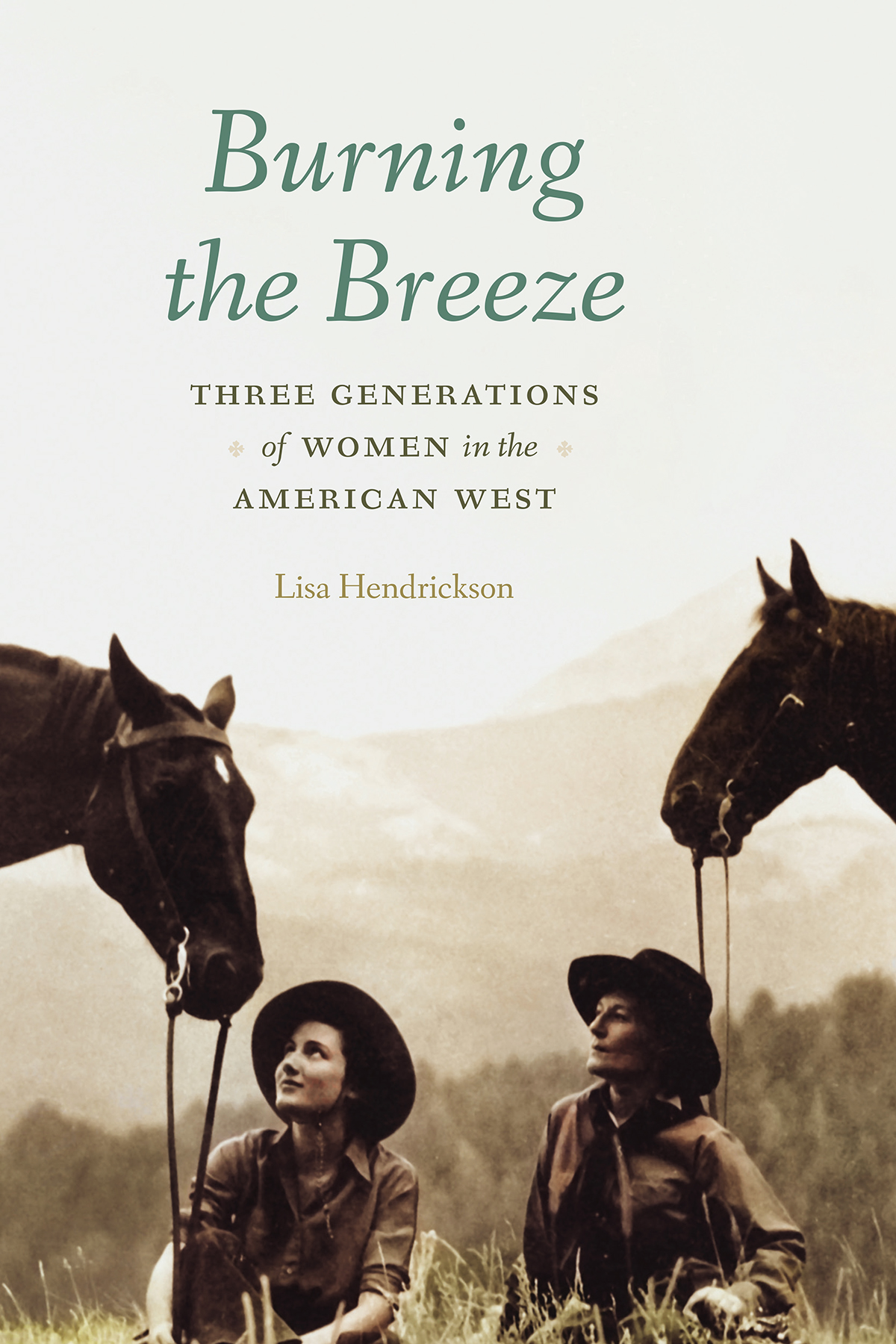
[A] remarkable blend of history and biography. Theres a Ken Burns or Willa Catherlike feel of both intimacy and sweep to the storytelling, and a touch of the heroic. When I finished reading, I felt not only as though I knew these women (and was inspired by them) but that I had a deeper understanding of American history.
Susan Neville, author of Fabrication: Essays on Making Things
Only enormously gifted women could have won the contest between financial disaster and hard-earned success. This book is a wonderful read. You wont be saddle sore, but you will be thrilled by the ride.
Pierce C. Mullen, professor emeritus of history at Montana State University
Julia Bennett sure did burn the breeze as she rode at full speed through a long life.... [Hendrickson] vividly portrays the ups and downs of a remarkable woman, sprinkled with a dash of scandal.
James H. Madison, professor emeritus of history at Indiana University

Burning the Breeze
Three Generations of Women in the American West
Lisa Hendrickson
Afterword by James E. Pepper
University of Nebraska Press | Lincoln
2021 by Lisa Hendrickson
Cover designed by University of Nebraska Press; cover image is from the interior.
Author photo John Whalen.
All photos in the Sherry Merica Pepper private collection, copyright Sherry Merica Pepper.
All rights reserved
Publication of this volume was assisted by a grant from the Friends of the University of Nebraska Press.
Library of Congress Cataloging-in-Publication Data
Names: Hendrickson, Lisa, author.
Title: Burning the breeze: three generations of women in the American West / Lisa Hendrickson; afterword by James E. Pepper.
Description: Lincoln: University of Nebraska Press, 2021. | Includes bibliographical references and index.
Identifiers: LCCN 2020057473
ISBN 9781496227928 (paperback)
ISBN 9781496228758 (epub)
ISBN 9781496228765 (pdf)
Subjects: LCSH : BusinesswomenWest (U.S.) | Women-owned business enterprisesWest (U.S.) | Dude ranchesWest (U.S.) | Tourist camps, hostels, etc.West (U.S.)
Classification: LCC HD 6054.4. W 48 H 35 2021 DDC 338.7/6179656092520978dc23
LC record available at https://lccn.loc.gov/2020057473
The publisher does not have any control over and does not assume any responsibility for author or third-party websites or their content.
To Sherry Merica Pepper, who opened her arms, her heart, and her family archives,
and to my parents, who encouraged me to explore the world
Burning the breeze:
Western slang for riding at full speed
Contents
This is the true story of a strong and determined womana woman who shunned the traditional American womens roles of her day and blazed her own trail. Chances are good that youve never heard of this Montana native, but her tale deserves telling.
In the middle of the Great Depression, fifty-one-year-old Julia Bennett arrived in New York City in 1931 with no money and an audacious plan: to hunt down easterners who could afford to spend their summer at her brand-new dude ranch. Julia, a big-game hunter known as a clever shot with both rifle and shotgun, flouted convention as she struggled to build a guest ranch. Through sheer determination and force of personality, she became the first independent woman in Montana to own and operate a dude ranch. She eventually built not just one but two successful dude ranchesone in Montana and one in Arizonaattracting world-renowned celebrities and artists who affectionately called her the Boss.
Julias grandmother and motherpioneers both in action and spiritset Julia on this road to independence. During the Civil War, Lizzie Nave Martin and her seven-year-old daughter, Lulu, set out from their home in war-torn Missouri with little more than a yoke of oxen, a covered wagon, and the clothes on their backs. Lizzies husband had died, leaving her destitute and with a mountain of debt to repay. Desperate to make a living, she and her daughter headed out on what would become a ten-month journey to the Montana Territory, hoping to find opportunities in the newly minted mining town of Virginia City. They faced countless heartbreaks and obstacles as they started a new life in this 145,000-square-mile territory that at the time was home to fewer than twenty-one thousand people.
Lulu would go on to marry at fourteen, raise Julia and four more children, and manage a remote 1,200-acre ranchoften while her husband, Benjamin Franklin Bembrick, was hundreds of miles away tending to his immense cattle herd.
The Montana Territory was not a place for the weak. Many who left nineteenth-century America to try their hands out West didnt stay. Blizzards, droughts, rugged terrain, wild animals, and clashes between the new settlers and Native tribes were among the many challenges that defeated them. But Julia Bennetts family came from hearty stock.
Montana novelist Dorothy Johnson once noted, I think the people who headed West were a different kind of people. Somebody said in a long poem that the cowards never started and the weaklings fell by the way. That doesnt mean that everyone who went West was noble, brave, courageous, and admirable because some of them were utter skunks, but they were strong.
In the past, western stories generally have focused on the adventures and exploits of men, but today the accomplishments of pioneering women are coming to the fore. Take, for example, Caroline Lockhart, a novelist and former East Coast investigative reporter who owned a working ranch in one of the most desolate areas of Montana. She declared to a newspaper reporter that petticoats are no bar to progress in either writing or ranching.
Jeannette Rankin, the first woman elected to the U.S. Congress in 1916, was another Montana woman who defied convention. A prominent womans suffragist and antiwar activist, she revealed her ambition in an early journal, writing, Go! Go! Go! It makes no difference where, just so you go! Go! Go! Remember, at the first opportunity, go. Interestingly, Julia Bennett herself earned the soubriquet Go! Go! from Chicago Tribune cartoonist Carey Orr, who was a frequent guest at her ranches.
Bonnie Reilly, also raised on a Montana ranch, observed, We didnt worry about whether something was ladylike. We just did what had to be done.
Julia Bennett, Lulu Bembrick, and Lizzie Nave Martin surely would have agreed.
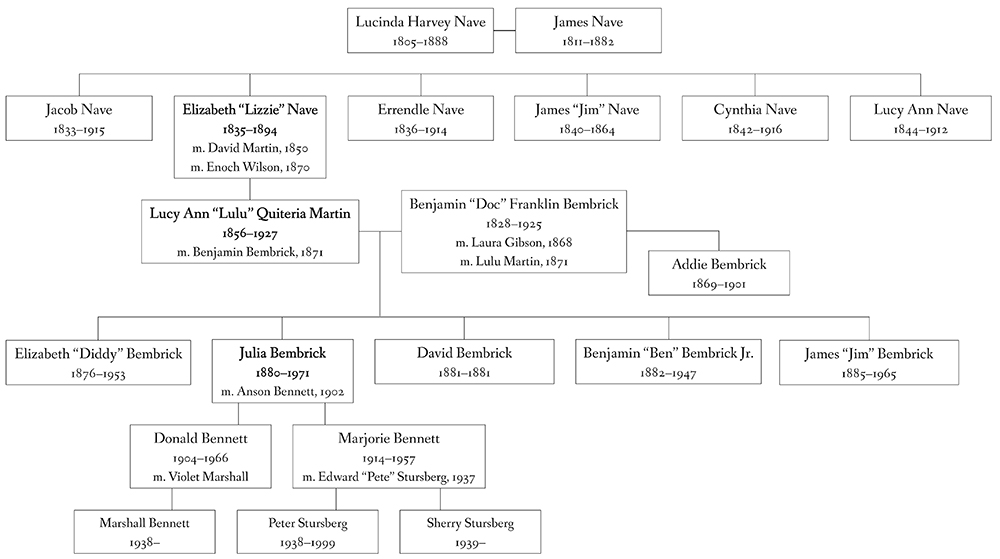
Nave, Bembrick, Bennett family tree. Compiled by Lisa Hendrickson.
In Western dramas [authenticity] must consist of cowboys, with their chaps (pronounced shaps), their wide-brim (or ten gallon, as we say here) hats, a kerchief about the neck and high-heeled, fancy boots. Though the outfit be utilitarian, it is also held to be romantic by those who have the West close to their romantic hearts.
New York Times, March 1, 1931
On a chilly February morning in 1931, Mrs. Julia Bennett, who just a few days earlier had arrived on a train from her native Montana, stood by the front door of New York Citys Northern Pacific Railway Office. She didnt know a soul, and she had only enough money to last a weekif she didnt eat much.
Despite these daunting circumstances, Julia, a striking fifty-one-year-old woman with an aquiline profile and dark-blonde hair, exuded an air of confidence. She sported a spotted cowhide vest, a silk neckerchief, and a black felt boleroand since she was now in Manhattan, she had exchanged her cowboy boots for a pair of black pumps that added a few inches to her five-foot-four frame.
Next page
